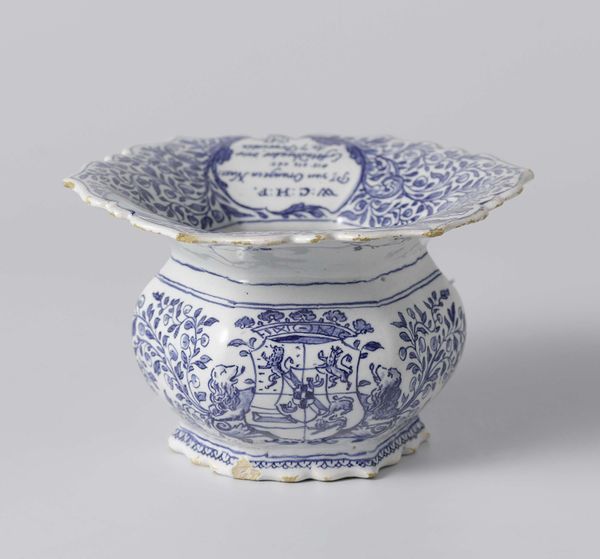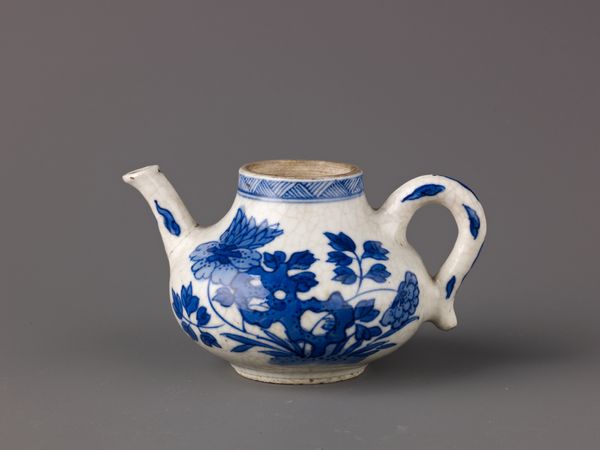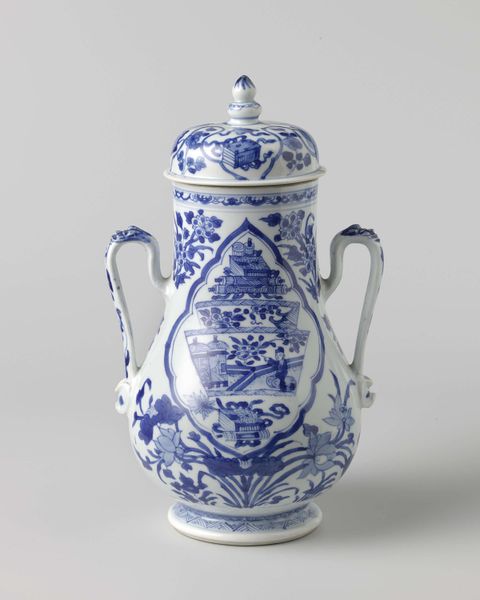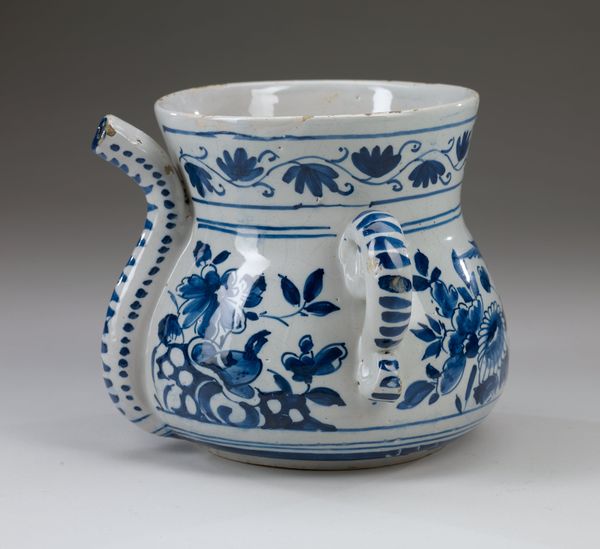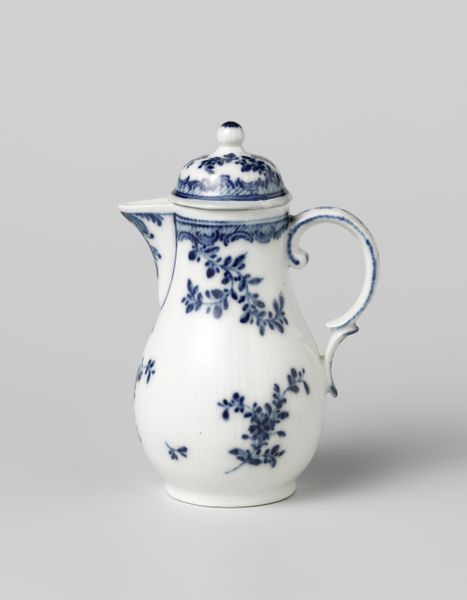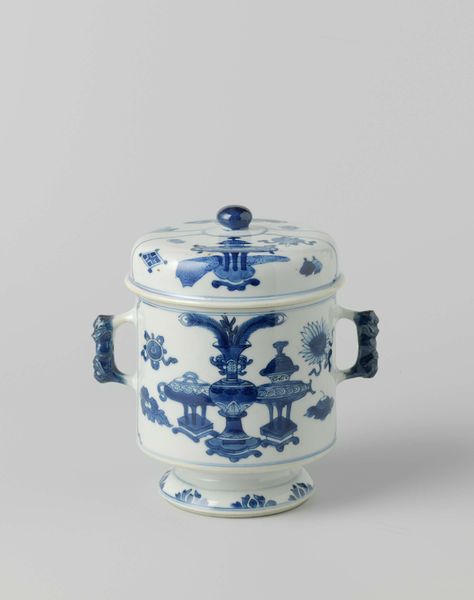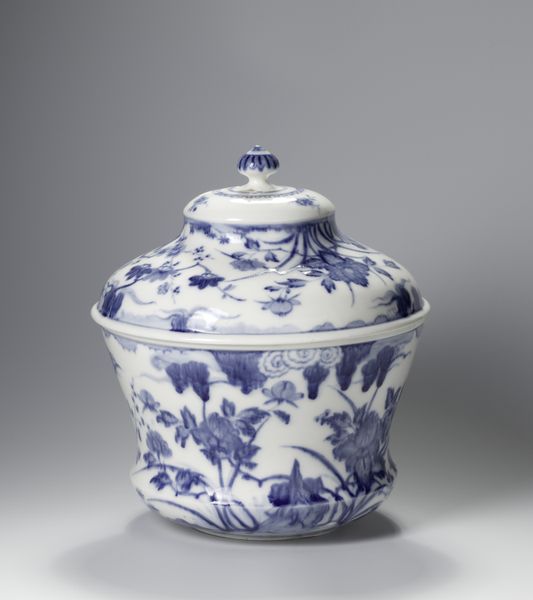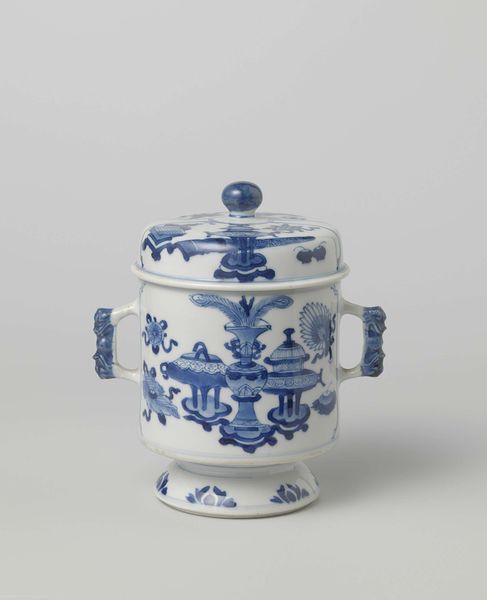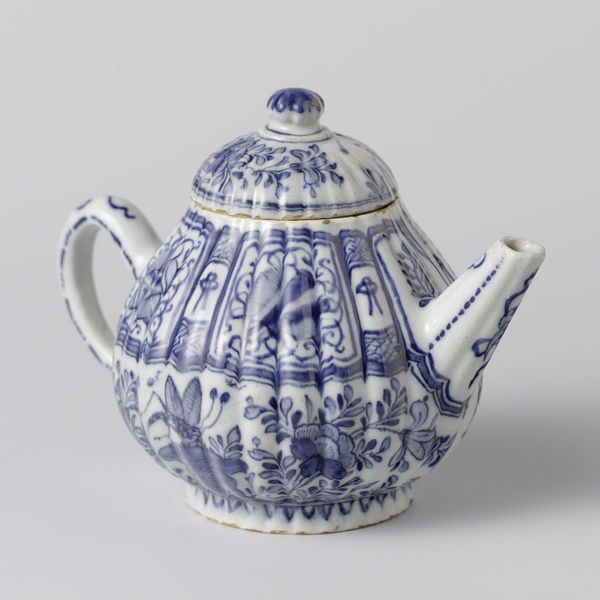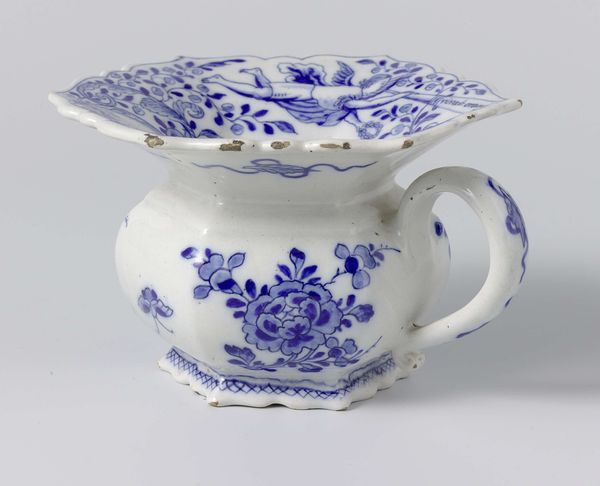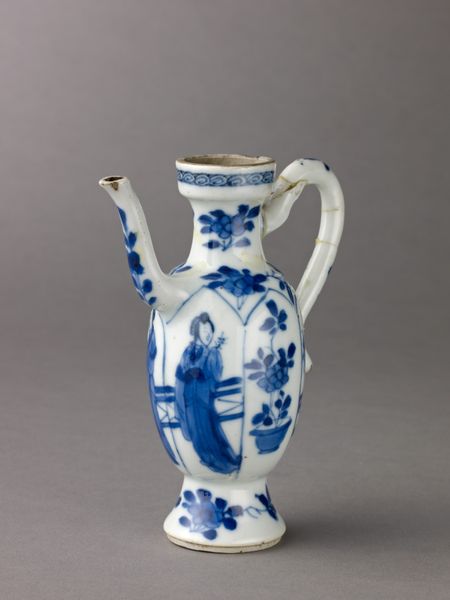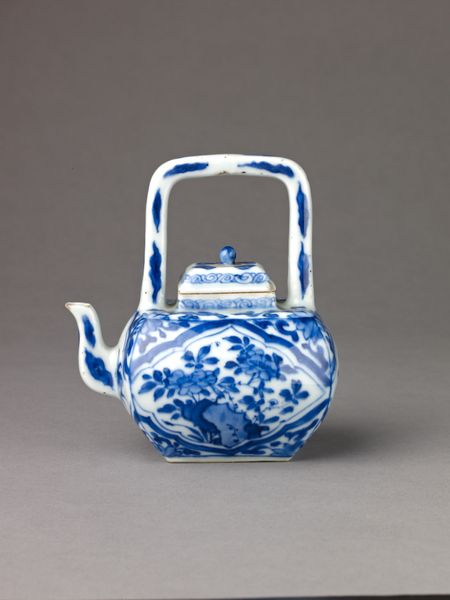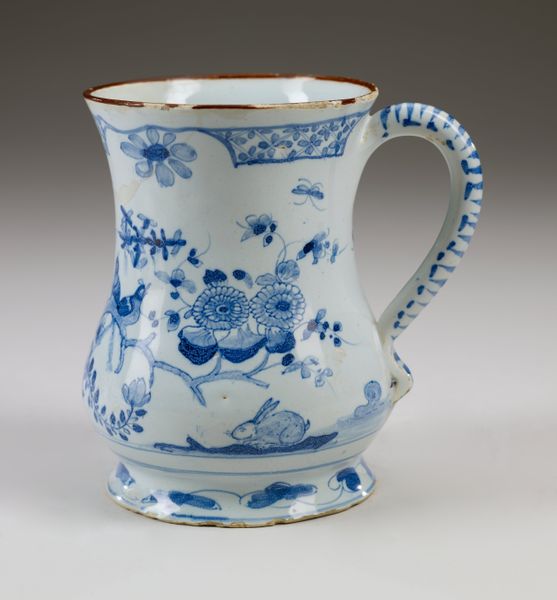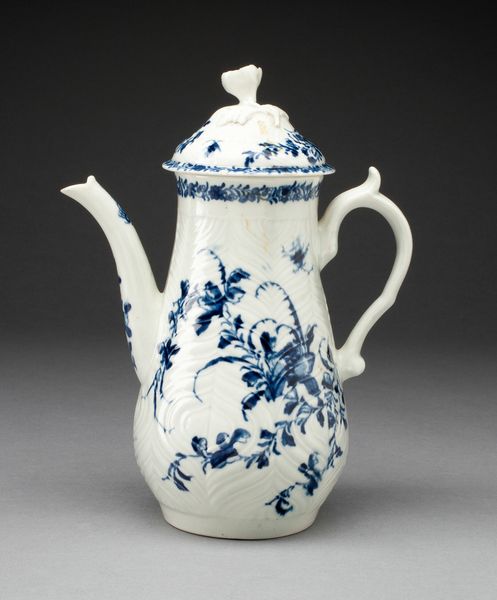
ceramic, earthenware
#
baroque
#
dutch-golden-age
#
ceramic
#
earthenware
#
stoneware
#
ceramic
#
decorative-art
Dimensions: height 16 cm, height 14.8 cm, width 20 cm
Copyright: Rijks Museum: Open Domain
Curator: Here we have a cruet set crafted between 1720 and 1735 by De Drie Posteleyne Astonne. The earthenware piece features a captivating blue and white decorative scheme. Editor: It's whimsical! The flowing patterns create a sense of joyful movement despite the static medium. And those little dragons… mischievous, almost. Curator: Indeed. Consider the social context: Dutch Delftware at this time was incredibly popular and often emulated Chinese porcelain. This piece speaks to the growing middle class's desire for refined domestic goods. Editor: It’s fascinating how this desire manifested itself in such intricate, almost maximalist patterns. Floral motifs, dragons… It really blurs the line between functionality and decoration. What does this aspiration towards the upper class reveal about societal values at the time? The gendered role in domesticity and the display of such items? Curator: Precisely. The imagery reflects the influence of global trade and the desire to possess exotic aesthetics. It also highlights the Dutch Republic's prominent role in the international market and their attempts to establish cultural dominance through production. Editor: So this wasn’t just a pretty set of containers for oil and vinegar; it was a statement. Owning something like this communicated taste, awareness of global trends, and, ultimately, wealth and power. I wonder how accessible these cruet sets were beyond the affluent merchant class? Curator: They were relatively accessible but still denoted a degree of financial comfort. Think about how this decorative style became ubiquitous through various forms, extending even to clothing prints. Editor: I’m looking at the craftsmanship, the repetitive motifs—how does the factory-made component interplay with artistry and social standing? How do those forms of craftsmanship compete to this day in social and economic structures? Curator: Excellent point, considering the era’s transition towards more industrial production. Its delicate details contrast this movement towards factory style design and reflect broader shifts within class dynamics. Editor: Food for thought, pun intended. Curator: Indeed. A compelling demonstration of how even seemingly mundane objects can embody complex social and historical narratives.
Comments
No comments
Be the first to comment and join the conversation on the ultimate creative platform.
